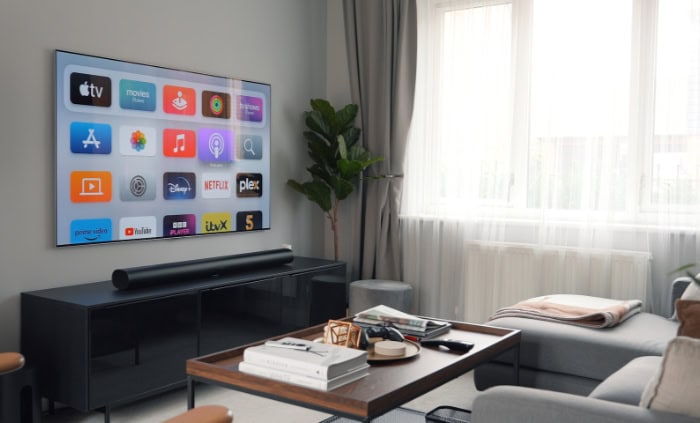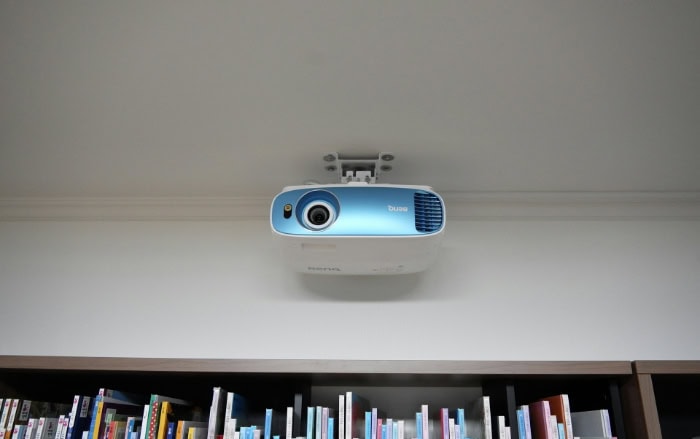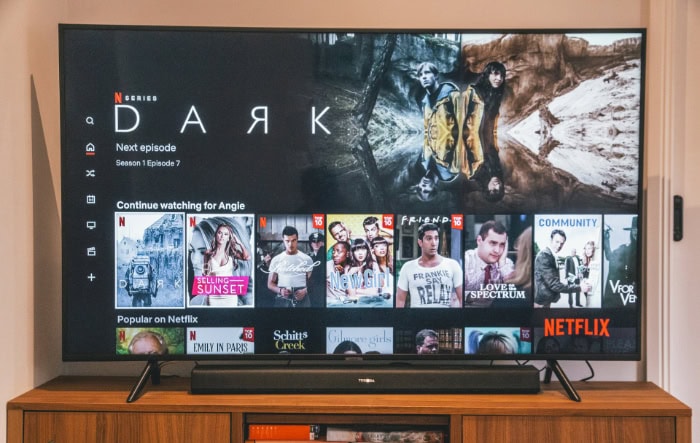Dolby Vision vs. Dolby Atmos: A New Era of Entertainment

Dolby Vision and Dolby Atmos have revolutionized home entertainment, transforming how we experience movies, TV shows, and games. These cutting-edge technologies elevate visual and audio quality to new heights, creating immersive environments that rival cinema experiences.
Dolby Vision enhances picture quality with vibrant colors and stunning contrast, while Dolby Atmos surrounds listeners with three-dimensional sound. As more content creators and device manufacturers adopt these technologies, consumers are seeking to understand their benefits and how to implement them in their own homes.
Dolby Vision Explained
Dolby Vision represents a significant advancement in video technology, offering viewers an enhanced visual experience through improved color, contrast, and brightness. This innovative system builds upon High Dynamic Range (HDR) technology to deliver more lifelike and immersive images on compatible displays.
At its foundation, Dolby Vision utilizes dynamic metadata to optimize picture quality on a scene-by-scene or even frame-by-frame basis. This dynamic approach allows for precise adjustments to brightness, color, and contrast throughout a video, ensuring that each moment is displayed at its best.
Enhanced Color and Brightness
One of Dolby Vision’s standout features is its ability to showcase a wider color gamut and increased brightness levels. This technology supports up to 12-bit color depth, which translates to over 68 billion colors—far surpassing the capabilities of standard displays.
Additionally, Dolby Vision can achieve peak brightness levels of up to 10,000 nits, though most current consumer displays typically max out at 1,000 to 2,000 nits.
Resolution and Compatibility
Dolby Vision is not tied to a specific resolution, making it versatile across various display technologies. It supports resolutions from 1080p Full HD up to 8K, adapting to the capabilities of the display device.
This flexibility ensures that viewers can enjoy enhanced picture quality regardless of their TV’s resolution.
Visual Impact
The impact of Dolby Vision on the viewing experience is substantial. Images appear more natural and lifelike, with improved detail in both bright highlights and dark shadows. Colors are richer and more accurate, creating a sense of depth and dimensionality that draws viewers into the content.
This enhanced visual fidelity is particularly noticeable in scenes with complex lighting or vibrant color palettes, making Dolby Vision a valuable asset for filmmakers and content creators looking to deliver their artistic vision with greater precision.
The Revolution of Dolby Atmos
Dolby Atmos has transformed the way we experience audio in entertainment. This innovative technology moves beyond traditional surround sound systems to create a three-dimensional audio environment that envelops the listener.
Dolby Atmos utilizes object-based audio, a concept that treats individual sounds as distinct entities within a 3D space. Unlike traditional channel-based audio, where sounds are assigned to specific speakers, object-based audio allows for precise placement and movement of sound elements.
This approach enables audio engineers to position sounds anywhere within the listening environment, including above the audience.
Height Channels and Sound Positioning
A defining feature of Dolby Atmos is its use of height channels. These additional speakers, typically placed on the ceiling or upward-firing, add a vertical dimension to the audio experience.
Combined with traditional surround sound speakers, this creates a hemisphere of sound around the listener. The technology can accurately place up to 128 simultaneous sound objects within this 3D space, creating a more lifelike and engaging audio environment.
Adaptive Rendering Technology
Dolby Atmos employs adaptive rendering to optimize audio playback across various speaker configurations. This intelligent system analyzes the available speakers and adjusts the audio output accordingly.
Whether you have a full home theater setup or a soundbar, Dolby Atmos adapts to deliver the best possible audio experience. This flexibility ensures that users can enjoy enhanced audio quality regardless of their specific hardware setup.
Surpassing Traditional Surround Sound
Compared to traditional 5.1 or 7.1 surround sound systems, Dolby Atmos offers a significant leap in audio immersion. While conventional setups rely on channel-based audio with fixed speaker positions, Dolby Atmos creates a more fluid and dynamic soundscape.
This allows for more precise audio placement and smoother sound transitions, resulting in a more natural and enveloping audio experience.
Enhancing Audio Immersion
The effect of Dolby Atmos on audio immersion is profound. Listeners experience a heightened sense of presence within the audio environment.
Sounds can seamlessly move around and above the audience, creating a more realistic and engaging experience. This level of immersion is particularly effective in movies, where it can enhance storytelling by more accurately representing the on-screen action.
In gaming, Dolby Atmos provides players with a competitive edge by allowing them to pinpoint sound sources more accurately.
Bringing Dolby Technologies Home

As Dolby Vision and Dolby Atmos gain popularity, manufacturers are integrating these technologies into a wide range of consumer electronics. From televisions to smartphones, the availability of Dolby-enabled devices continues to expand, offering users more options to experience enhanced audio and video quality in their homes and on the go.
Dolby Vision-Enabled Displays
Many modern televisions now support Dolby Vision, with brands like LG, Sony, TCL, and Vizio leading the charge. These TVs come in various sizes and price ranges, making Dolby Vision accessible to a broad audience.
Additionally, streaming devices such as Apple TV 4K, Roku Ultra, and Amazon Fire TV Stick 4K Max offer Dolby Vision support, allowing users to upgrade their existing setups without replacing their entire television.
Dolby Atmos-Compatible Audio Systems
Dolby Atmos has found its way into numerous audio devices. Home theater receivers from brands like Denon, Marantz, and Yamaha offer Dolby Atmos decoding capabilities, allowing users to create immersive multi-speaker setups.
For those with limited space, soundbars from companies such as Sonos, Samsung, and Sony provide a more compact Dolby Atmos experience. Some of these soundbars use upward-firing speakers to simulate height channels, while others rely on virtual processing to create a 3D sound effect.
Mobile and Computer Integration
Dolby technologies are no longer confined to home entertainment systems. Many smartphones, including select models from Apple, Samsung, and OnePlus, now support Dolby Atmos for improved audio playback through headphones.
Some tablets and laptops also feature Dolby Vision displays, bringing HDR capabilities to portable devices. For computers, software solutions like Dolby Access allow users to experience Atmos audio through compatible headphones or speakers.
Content Availability and Streaming Platforms
The adoption of Dolby technologies by content creators and streaming platforms has grown significantly. Major streaming services like Netflix, Amazon Prime Video, and Disney+ offer a growing library of Dolby Vision and Dolby Atmos content.
These platforms typically highlight Dolby-enabled content with special badges, making it easy for viewers to identify. Additionally, many 4K Ultra HD Blu-ray discs feature both Dolby Vision and Dolby Atmos, providing a high-quality option for physical media enthusiasts.
Gaming and Dolby Technologies
The gaming industry has also embraced Dolby technologies. Current-generation consoles like the Xbox Series X and S support both Dolby Vision and Dolby Atmos, enhancing the visual and audio experience of compatible games.
Some PC games also offer Dolby Atmos support, allowing players to immerse themselves in more realistic and spatially accurate soundscapes.
Optimizing Your Home for Dolby Vision and Atmos

Setting up Dolby Vision and Dolby Atmos in your home can significantly enhance your entertainment experience. While the process may seem daunting, it can be broken down into manageable steps based on your existing equipment and desired setup.
Essential Equipment for Immersive Viewing
To fully experience Dolby Vision and Atmos, you’ll need compatible devices. For Dolby Vision, a TV or projector that supports the technology is crucial.
Dolby Atmos requires more consideration, as the setup can range from a simple soundbar to a complex multi-speaker system. Here’s a list of potential equipment:
- Dolby Vision-compatible TV or projector
- Dolby Atmos-enabled soundbar or AV receiver
- Upward-firing or ceiling-mounted speakers for height channels
- HDMI cables that support 4K HDR and eARC (for audio passthrough)
TV-Only Setup for Dolby Vision
If you have a Dolby Vision-compatible TV, the setup process is straightforward:
- Ensure your TV’s firmware is up to date.
- Connect your Dolby Vision source (e.g., streaming device, Blu-ray player) to the TV using a compatible HDMI cable.
- In your TV’s picture settings, enable Dolby Vision or HDR mode.
- Adjust brightness and contrast settings for optimal viewing in your room’s lighting conditions.
Integrating a Dolby Atmos Soundbar
Adding a Dolby Atmos soundbar to your setup enhances audio immersion:
- Connect the soundbar to your TV using an HDMI cable, preferably to the eARC port if available.
- Enable HDMI-CEC on both the TV and soundbar for seamless control.
- In your TV’s audio settings, select the soundbar as the audio output device.
- Configure the soundbar’s settings, including any room calibration features it may offer.
- For soundbars with upward-firing speakers, ensure there are no obstructions above the unit.
Full Home Theater with AV Receiver and Speakers
For the ultimate Dolby Atmos experience, a multi-speaker setup with an AV receiver is ideal:
- Position your speakers according to Dolby’s recommended layouts, including height channels.
- Connect all speakers to the AV receiver, ensuring correct placement and polarity.
- Connect your video sources to the AV receiver’s HDMI inputs.
- Use the receiver’s HDMI output to connect to your TV’s eARC port.
- Run the receiver’s automatic room calibration system to optimize audio for your space.
- In the receiver’s settings, enable Dolby Atmos decoding and any relevant audio processing modes.
Troubleshooting Common Issues
If you encounter problems with your Dolby setup, try these solutions:
- No Dolby Vision picture: Verify that your HDMI cables support 4K HDR and are securely connected. Ensure Dolby Vision is enabled in both your source device and TV settings.
- Dolby Atmos not working: Check that your content is Dolby Atmos-encoded and that your audio device is set to output Atmos. For streaming services, confirm that your subscription plan includes Atmos content.
- Audio sync issues: Use the audio delay settings on your TV or audio device to align sound with the picture.
- Poor Atmos effect: Adjust speaker positions and run room calibration again. Ensure there are no obstructions blocking upward-firing speakers.
Transforming Entertainment with Dolby Technologies

Dolby Vision and Dolby Atmos have revolutionized various forms of entertainment, offering enhanced experiences across movies, TV shows, gaming, music, and live events. These technologies have not only improved the quality of content but have also changed how creators approach their craft, opening up new possibilities for immersive storytelling and audience engagement.
Cinematic Experiences at Home
Movies and TV shows benefit greatly from Dolby Vision and Atmos. The enhanced visual quality provided by Dolby Vision allows viewers to see details in both bright and dark scenes that were previously lost.
This improved contrast and color accuracy brings the director’s vision to life, making scenes more vivid and lifelike. For example, in nature documentaries, the vibrant colors of exotic animals and landscapes are rendered with stunning clarity.
Dolby Atmos adds another layer of immersion to film and television. Action sequences become more thrilling as sounds move dynamically around and above the viewer.
Subtle ambient noises in dramatic scenes create a more enveloping atmosphere, drawing the audience deeper into the story. This combination of visual and audio enhancements brings the cinema experience into the living room, allowing viewers to enjoy content as the creators intended.
Elevating Gaming Experiences
The gaming industry has embraced Dolby technologies, using them to create more immersive and competitive gaming environments. Dolby Vision enhances the visual aspects of games, making environments more realistic and allowing for better visibility in both bright and dark areas.
This can be particularly advantageous in games with varied lighting conditions, such as open-world titles or horror games.
Dolby Atmos in gaming provides a significant advantage in terms of spatial awareness. Players can accurately pinpoint the direction of footsteps, gunfire, or other crucial sound cues, enhancing their ability to react quickly and strategically.
In racing games, the precise positioning of engine sounds and environmental effects adds to the realism, making players feel as if they’re actually behind the wheel.
Redefining Music Listening
While traditionally associated with visual media, Dolby technologies are also making waves in the music industry. Dolby Atmos Music allows artists and producers to create three-dimensional soundscapes, placing individual instruments and vocals in specific locations within the listening space.
This approach to mixing music can reveal new layers in familiar songs and provide a more engaging listening experience.
Classical music particularly benefits from this technology, as listeners can experience the placement of different orchestra sections as if they were in the concert hall. In popular music, Dolby Atmos can enhance the separation of instruments, allowing for a clearer and more detailed sound.
Some artists are even creating music specifically designed for Atmos, exploring new creative possibilities in sound design and composition.
Bringing Live Events into the Living Room
Sports broadcasts and live events have also been transformed by Dolby technologies. Dolby Vision enhances the visual quality of sports broadcasts, making it easier to follow fast-paced action and see details on the field or court.
The improved color accuracy can make team colors more vibrant and true to life, enhancing the viewing experience for fans.
Dolby Atmos adds a new dimension to live event audio, creating a more immersive atmosphere that mimics being in the stadium or concert venue. For sports, this means hearing the roar of the crowd from all directions, the thud of a tackle, or the swish of a basketball net with pinpoint accuracy.
In live music broadcasts, Atmos can recreate the acoustics of the venue, giving viewers at home a sense of being present at the event.
Conclusion
Dolby Vision and Dolby Atmos have revolutionized home entertainment, offering viewers and listeners an unparalleled sensory experience. These technologies work in harmony to create a more immersive and realistic environment, enhancing everything from blockbuster movies to live sports broadcasts.
Dolby Vision’s advanced HDR capabilities bring out stunning details and vibrant colors, while Dolby Atmos envelops the audience in a three-dimensional soundscape.
The impact on home entertainment quality is substantial. Consumers now have access to cinema-grade experiences without leaving their living rooms.
From gaming to music playback, these technologies have expanded the creative possibilities for content creators and raised the bar for audience expectations.
Consumers considering equipment upgrades should prioritize compatibility with both Dolby Vision and Atmos. While the initial investment may be higher, the long-term benefits in terms of entertainment quality are significant.
It’s important to consider the specific needs of your space and budget when selecting TVs, soundbars, or full home theater systems.
Looking ahead, Dolby technologies will likely continue to shape the future of entertainment. As more content becomes available and hardware prices decrease, these immersive experiences will become increasingly accessible to a wider audience.
By embracing these advancements, viewers can transform their home entertainment setups into state-of-the-art multimedia centers, bringing the magic of the cinema directly into their homes.


